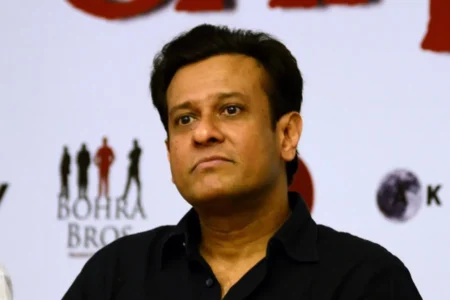Born on March 27, 1963, in India, Bedabrata Pain’s journey is nothing short of extraordinary. Growing up in Calcutta, he excelled academically, ranking third in the Madhyamik Exam and fifth in the Higher Secondary Exam.
His pursuit of knowledge led him to IIT Kharagpur, where he studied Electronics & Electrical Communication Engineering on an Ivy League scholarship. Later, he pursued his M.S. and PhD in Applied Physics from Columbia University in New York.
Academic Career of Bedabrata Pain
In 1993, Bedabrata Pain embarked on a remarkable chapter of his career by joining the NASA Jet Propulsion Laboratory at the California Institute of Technology.
His expertise in image sensor and focal-plane technology research propelled him to significant roles within NASA. Concurrently, he shared his knowledge by teaching courses on CMOS imaging at UCLA and participating as an invited speaker at numerous conferences worldwide.
Over the years, he authored over 150 technical papers and garnered prestigious awards, including the Lew-Allen Award for Excellence.
Invention and Innovation
Bedabrata Pain’s legacy is deeply intertwined with innovation. In the 1990s, he played a pivotal role in inventing the active pixel sensor technology, a breakthrough that revolutionized imaging technology.
This invention, which produced the world’s smallest camera, earned him a place in the US Space Technology Hall of Fame. Today, this technology is ubiquitous, powering everything from smartphone cameras to space telescopes.
Achievements and Awards
During his 15-year tenure at NASA, Bedabrata Pain amassed an impressive portfolio of 87 invention patents, solidifying his status as a visionary in his field. His contributions have not gone unnoticed, with accolades such as the National Film Award for Best Debut Film of a Director for his acclaimed film “Chittagong.”
Personal Life and Tragedy
Beyond his professional accomplishments, Bedabrata Pain’s life is marked by profound personal experiences. He shares a poignant bond with his wife, Shonali Bose, and their two sons, Ishan and Vivan. Tragically, they suffered the loss of their beloved son Ishan in a devastating accident in 2010, a profound loss that deeply impacted their lives.
Film Career
Transitioning seamlessly from the realm of science to art, Bedabrata Pain ventured into filmmaking, leaving an indelible mark on Indian cinema.
As the executive producer of the award-winning film “Amu” and the director of “Chittagong,” he showcased his storytelling prowess and technical acumen. Notably, he employed the same digital imaging technology that he helped pioneer at NASA, bridging the gap between science and cinema.
A Visionary’s Journey Continues
Bedabrata Pain’s journey is a testament to the power of perseverance, innovation, and resilience. Undeterred by challenges, he continues to push the boundaries of creativity and technology. His upcoming project, “Déjà vu,” promises to offer audiences a compelling glimpse into the lives of farmers in the Mid-West USA, further solidifying his reputation as a multifaceted visionary.
Also Read:Avtar Saini: The Visionary Behind Intel’s Pentium Processor
